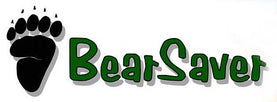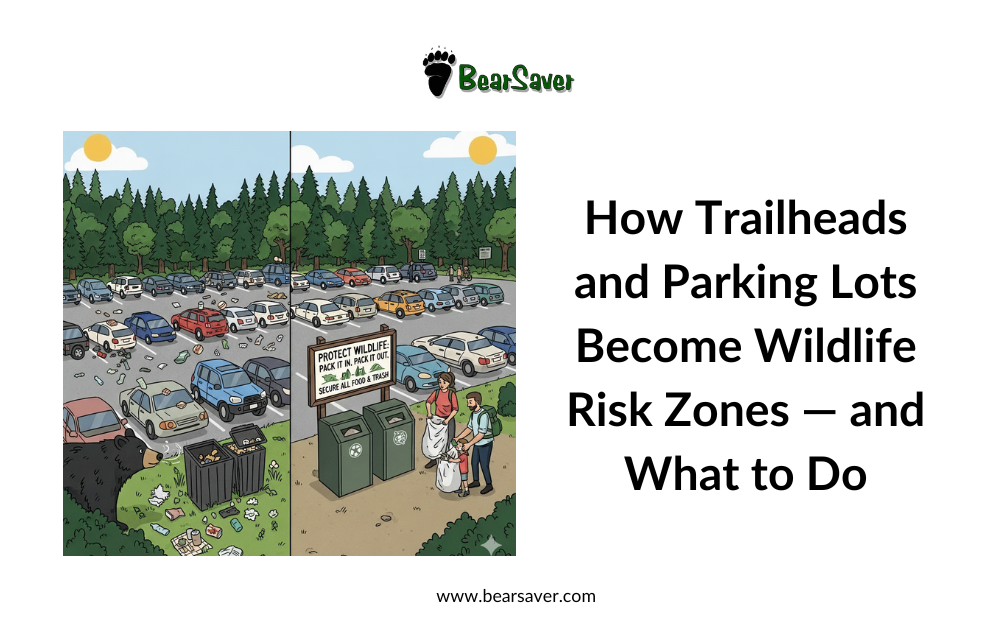How Trailheads and Parking Lots Become Wildlife Risk Zones — and What to Do
Posted by Securr Blogger on
Trailheads and recreation-area parking lots are gateways to outdoor adventure—but for wildlife, they often become unintended feeding zones. From national parks to small community green spaces, animals quickly learn that these human-made areas offer easy access to trash, food scraps, and smells that lure them in.
While this encounter might seem harmless or even charming at first, the reality is far more serious. Human-supplied food disrupts natural animal behavior, increases aggression, and often leads to dangerous encounters or the tragic removal of wildlife. But the solution is clear: protect waste at the source.
Why Humans Create “Risk Zones” Without Realizing It
Even the most respectful outdoor enthusiasts unintentionally contribute to wildlife problems. A few common issues include:
1. Food Residue and Scents
Backpack wrappers left in cars, spilled snacks, or uncleaned barbecue areas leave strong smells behind. Bears, raccoons, coyotes, and even ravens can detect these scents from astonishing distances.
2. Overfilled or Poorly Designed Trash Bins
Standard commercial trash cans are no match for intelligent wildlife. Bears can pry open lids, tip cans, or crush weak metal. Raccoons and smaller animals easily access openings not designed to keep them out.
3. High Traffic, High Volume
Trailheads and parking lots experience frequent turnover. With dozens or hundreds of visitors passing through, the likelihood of improperly disposed waste skyrockets.
4. Habituation to Human Areas
Once animals learn that parking lots and trailheads are predictable food sources, they return daily. This habituation leads to escalating conflicts, property damage, and wildlife needing to be relocated—or worse.
The Real-World Consequences of Poor Waste Security
Threats to Wildlife
When animals access human food, their natural diets and habits shift dramatically. They become bolder and more persistent. Bears that invade parking lots and trailheads are often euthanized due to “dangerous habituation,” even though human negligence created the situation.
Threats to People
Wildlife in human spaces increases risks of:
-
Vehicle damage
-
Aggressive behavior from food-conditioned animals
-
Sudden encounters in crowded recreation zones
Threats to Property and Infrastructure
Repeated break-ins can result in:
-
Destroyed trash cans
-
Damage to vehicles
-
Required maintenance on signage and structures
-
Higher operational costs for parks, towns, and facilities
In short: unsecured waste leads to long-term ecological and financial impacts.
How to Turn High-Traffic Areas Into Safe Zones
Preventing wildlife conflicts doesn't require removing nature from recreation spaces—it simply requires properly securing waste.
1. Use Certified, Tested, Truly Animal-Proof Containers
Not all “heavy-duty” or “outdoor” trash cans are wildlife resistant. Bears, in particular, are remarkably strong and problem-solving creatures. Only containers designed, tested, and certified for wildlife resistance can reliably prevent break-ins.
2. Position Waste Enclosures Strategically
Place containers:
-
At trailheads
-
In parking lots
-
Near restrooms or visitor kiosks
-
At scenic pull-outs or picnic zones
-
Anywhere visitors naturally dispose of waste
3. Ensure Correct User Operation
Even the best containers fail if left unlatched. Clear signage and user-friendly designs help ensure visitors secure waste properly.
4. Maintain Regular Waste Hauling Schedules
Overflowing bins attract wildlife faster than anything else. Consistent emptying prevents animals from becoming interested in the first place.
Highlight: BearSaver CE Series Triple Enclosure — The Gold Standard in Wildlife Resistance
One of the most trusted commercial solutions for high-traffic outdoor waste control is the BearSaver CE Series Triple Trash & Recycling Enclosure (Model CE340-CH).
Why This Model Works So Well
✔ Certified, Bear-Resistant Construction
Built to withstand the strength, intelligence, and persistence of North America’s largest wildlife.
✔ Three Separate Compartments
Allows parks, municipalities, and commercial sites to manage trash, recycling, and organics effectively—without increasing wildlife exposure.
✔ Secure, User-Friendly Latches
People can easily use them; animals cannot. This eliminates the biggest point of failure in most outdoor waste systems.
✔ High-Capacity, Durable Steel Build
Perfect for parking lots and trailheads with high visitor turnover.
✔ Clean, Professional Appearance
Blends into modern park and municipal aesthetics while promoting responsible waste behavior.
This enclosure is engineered specifically for locations where wildlife pressure is serious and constant. If you manage a park, trail system, municipal recreation area, or commercial outdoor venue, choosing a purpose-built, animal-proof container like this is the single biggest factor in preventing wildlife conflicts.
Protect Wildlife. Protect People. Protect Your Park.
Parking lots and trailheads will always be busy hubs for outdoor recreation—meaning they’ll always attract wildlife unless waste is controlled. By investing in tested, bear-resistant trash systems like the BearSaver CE Series, organizations can eliminate one of the biggest sources of human-wildlife conflict.
To discuss configurations, pricing, or volume orders:
📞 Call: 800.851.3887
📧 Email: sales@bearsaver.com

